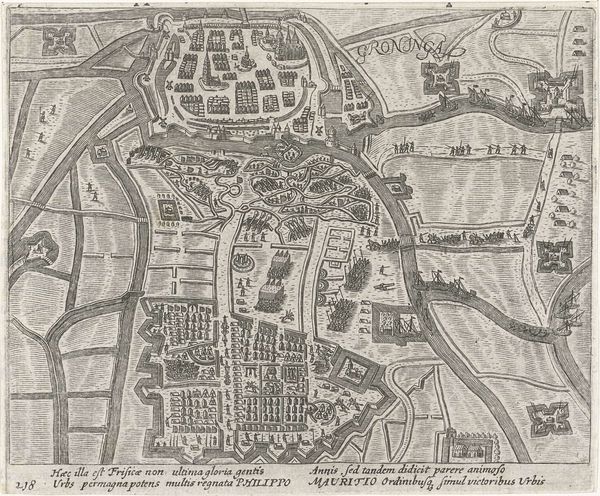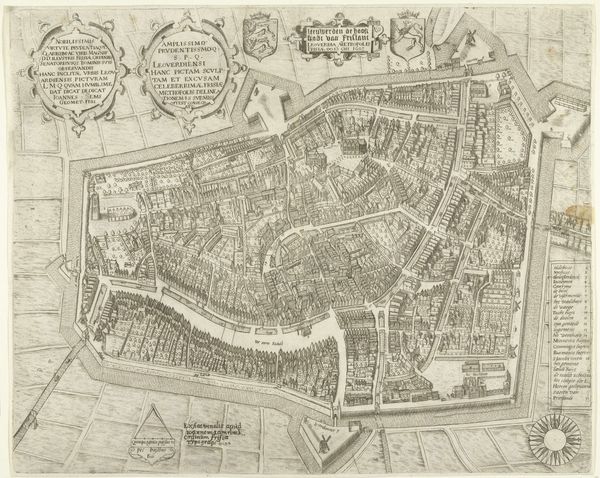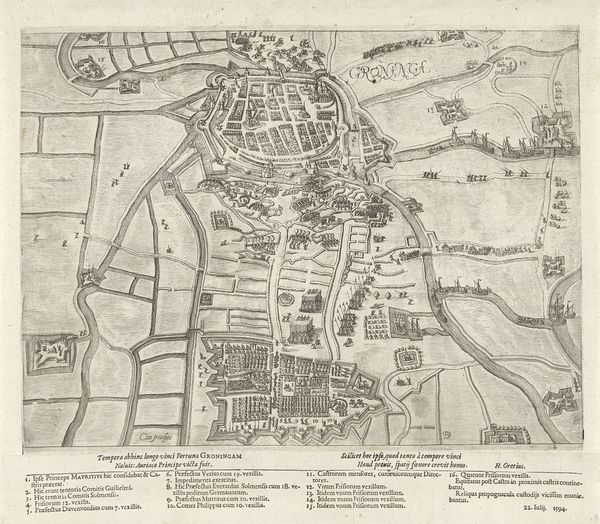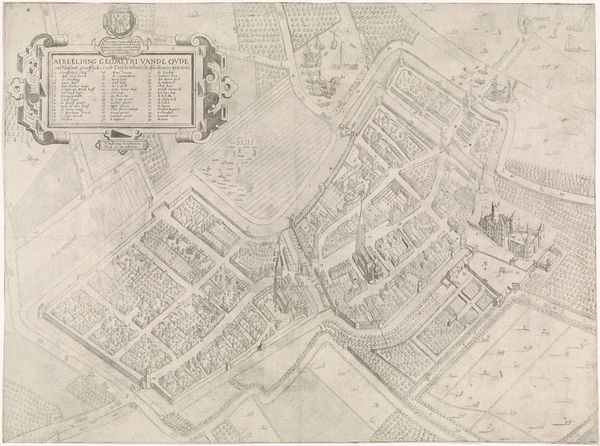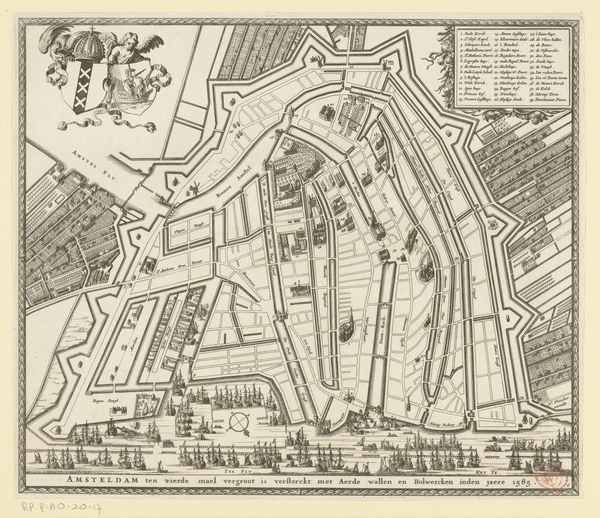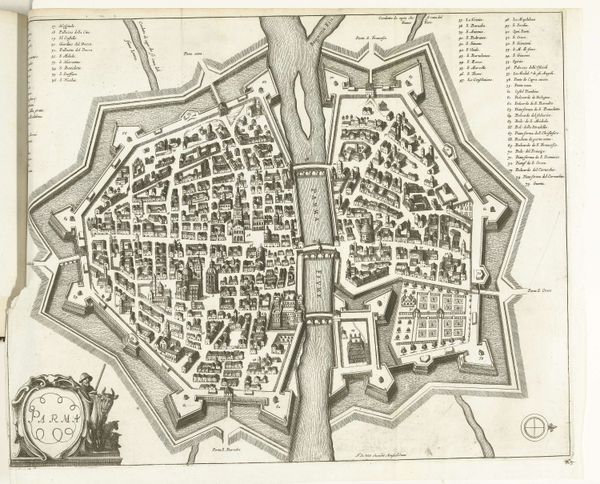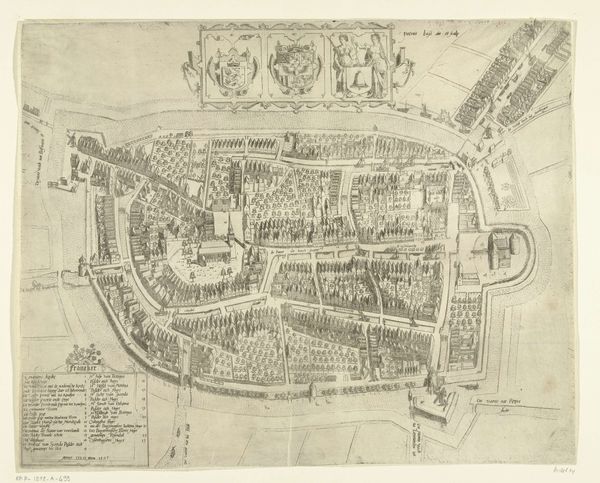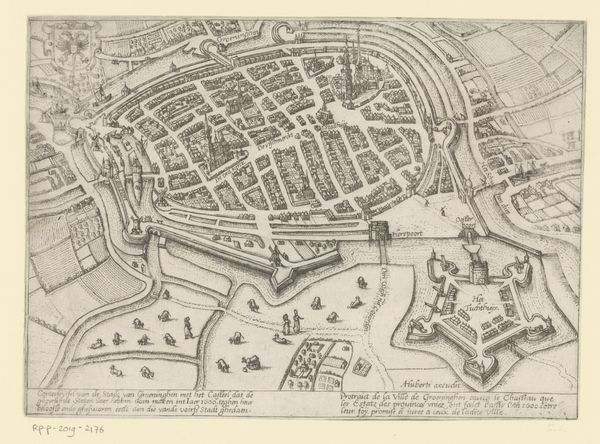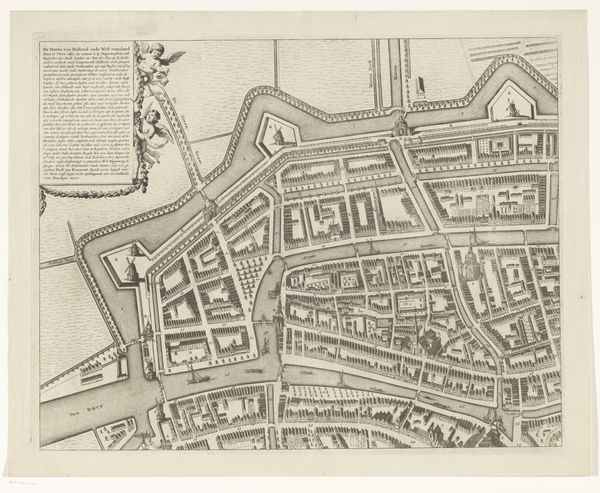
print, engraving
#
dutch-golden-age
#
mechanical pen drawing
# print
#
pen sketch
#
old engraving style
#
perspective
#
personal sketchbook
#
linework heavy
#
sketchwork
#
geometric
#
pen-ink sketch
#
line
#
pen work
#
sketchbook drawing
#
cityscape
#
history-painting
#
sketchbook art
#
engraving
Dimensions: height 237 mm, width 314 mm
Copyright: Rijks Museum: Open Domain
Curator: At the Rijksmuseum, we have an engraving entitled "Beleg van Groningen, 1594," which roughly translates to "The Siege of Groningen, 1594." It's attributed to Bartholomeus Willemsz. Dolendo and likely dates from the early 1600s. Editor: My first impression is one of precision, but also detachment. The intricate details feel almost clinical, more of an architectural rendering than a dynamic scene of conflict. It’s very much like a diagram of warfare. Curator: Well, you’re right to pick up on that. This isn't really meant to evoke the *feeling* of a siege, but rather to communicate strategic information. Consider that detailed townscape inside the fortifications. The Siege of Groningen was a pivotal moment in the Dutch Revolt, leading to the expulsion of the Spanish. Visualizing that was politically potent. Editor: Precisely. Even the stark lines and the uniform layout of the besieging forces serve as symbols of control and order. Look at the rivers represented— they guide the eye around the story of attack. There is definitely a deliberate intention of illustrating spatial and military supremacy through a precise and controlled iconography. Curator: That's right. Also note the artist, Dolendo, worked primarily as a printmaker. Prints allowed for widespread dissemination of information, making events like this accessible. Prints, in their reproducible form, turned events like sieges into accessible history, which really cemented them in the Dutch consciousness. Editor: It’s also important to understand this within a visual culture steeped in allegory. The Siege, in this form, then moves beyond mere reporting. It enters the symbolic realm where Groningen represents the Dutch struggle for independence, and the besieging forces stand for Spanish oppression. It becomes more than a historical depiction; it transforms into an emblem. Curator: An emblem of Dutch resilience and triumph, precisely. Viewing it within the context of its historical moment illuminates the deliberate visual choices made. This print isn’t just depicting history, it’s actively shaping how history is understood and remembered. Editor: Indeed. Analyzing its symbolism has given me an added layer of appreciation for how cultural memory works, how events transition into symbols over time. Curator: And I can see how Dolendo’s detailed rendering serves not just as a record but as a tool of cultural and political affirmation for the emerging Dutch Republic.
Comments
No comments
Be the first to comment and join the conversation on the ultimate creative platform.
